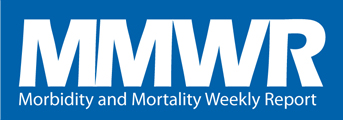MMWR News Synopsis for February 6, 2014
Progress Along the Continuum of HIV Care Among Blacks with Diagnosed HIV— United States, 2010
National Center for HIV/AIDS, Viral Hepatitis, STD, and TB Prevention
404-639-8895
NCHHSTPMediaTeam@cdc.gov
New analysis indicates that many HIV-infected African Americans are not receiving the critical care and treatment needed to sustain healthy lives, keep their virus under control, and prevent transmission of the virus to partners. CDC data from the National HIV Surveillance System and the Medical Monitoring Project were used to examine the percentage of African Americans diagnosed with HIV infection who were receiving care and treatment in 2010. The report describes the status at steps of the HIV care continuum among African Americans by sex, age, and HIV risk group. The results of this analysis indicate that of blacks who have been diagnosed with HIV, 75 percent were linked to care, 48 percent stayed in care, 46 percent were prescribed antiretroviral therapy, and 35 percent achieved viral suppression (i.e., the virus is under control at a level that helps keep people healthy and reduces the risk of transmitting the virus to others). Black males had lower levels of care and viral suppression than black females, and those who were under the age of 25 had lower levels than those who were older. The findings underscore the need for additional efforts to ensure that those who are infected with HIV receive the care and treatment they need. This is especially critical for African Americans, who bear the greatest burden of HIV in the U.S.
HIV Infection Among Partners of HIV-Infected Black Men Who Have Sex with Men — North Carolina, 2011–2013
National Center for HIV/AIDS, Viral Hepatitis, STD, and TB Prevention
404-639-8895
NCHHSTPMediaTeam@cdc.gov
An evaluation of partner services provided to African American men who have sex with men (MSM) newly diagnosed with HIV in North Carolina finds that these efforts can also provide an important opportunity to re-engage HIV-infected partners in medical care. A critical component of partner services has been the identification of contacts of those diagnosed with HIV to notify them of a possible exposure. To evaluate the potential for this approach to also improve outcomes in care and treatment among African American MSM, researchers analyzed results from a partner services study conducted in North Carolina. Between September 2011 and December 2012, partner services were provided to 30 HIV-infected African American MSM who named 95 sex partners and social contacts. Of these, 41 percent had been previously diagnosed with HIV. A high proportion of networks included both HIV-infected and HIV-negative persons, demonstrating a high risk of potential future transmission. The majority of infected partners were already aware of their diagnosis, but did not have their virus under control, and accepted assistance to re-link back into care. Partner services can provide an opportunity to re-engage HIV-infected persons aware of their status in medical care, and may be particularly important for young African American MSM that are disproportionately affected by HIV and less likely to maintain sustained access to care.
Noninfluenza Vaccination Coverage Among Adults — United States, 2012
CDC Media Relations
404-639-3286
Vaccines are available to protect adults from potentially life-threatening infectious diseases, but vaccination rates among adults remain low. CDC urges adults to get recommended vaccines and healthcare providers to assess what vaccines their adult patients need and offer them. Vaccinations are recommended throughout life to prevent vaccine-preventable diseases and secondary health consequences. Adult vaccination coverage remains low, however, for most routinely recommended vaccines and well below Healthy People 2020 targets. To assess adult (aged ≥19 years) vaccination coverage for selected vaccines, CDC analyzed data from the 2012 National Health Interview Survey. Compared with 2011 estimates, modest gains occurred in tetanus and diphtheria toxoid with acellular pertussis vaccination among adults aged 19–64 years, herpes zoster vaccination among adults aged >60 years, and human papillomavirus vaccination coverage among women aged 19–26. Coverage for other vaccines and risk groups did not improve, and racial/ethnic disparities persisted for routinely recommended adult vaccines. Wider use of practices shown to improve adult vaccination is needed.
Global Control and Regional Elimination of Measles, 2000–2012
CDC Media Relations
404-639-3286
During 2000–2012, measles vaccination prevented approximately13.8 million deaths; increasing routine MCV coverage worldwide and regular SIAs in member states lacking high coverage with 2 doses of MCV contributed to a 77 percent decrease in reported measles incidence and a 78 percent reduction in estimated measles mortality, reaching historic lows. The World Health Assembly established milestones to be achieved by 2015: 1) increase routine coverage with the first dose of measles-containing vaccine (MCV) for children aged 1 year to ≥90 percent nationally and ≥80 percent in every district or equivalent administrative unit; 2) reduce and maintain annual measles incidence to <5 cases per million; and 3) reduce measles mortality by >95 percent from the 2000 estimate. All 6 World Health Organization regions now have measles elimination goals. During 2000–2012, increases in routine MCV coverage, plus supplementary immunization activities reaching 145 million children in 2012, led to a 77 percent decrease worldwide in reported annual measles incidence, from 146 to 33 per million population, and a 78 percent decline in estimated annual measles deaths, from 562,400 to 122,000. Achieving the 2015 targets and elimination goals will require countries and their partners to raise the visibility of measles elimination and make substantial and sustained additional investments in strengthening health systems.
###

